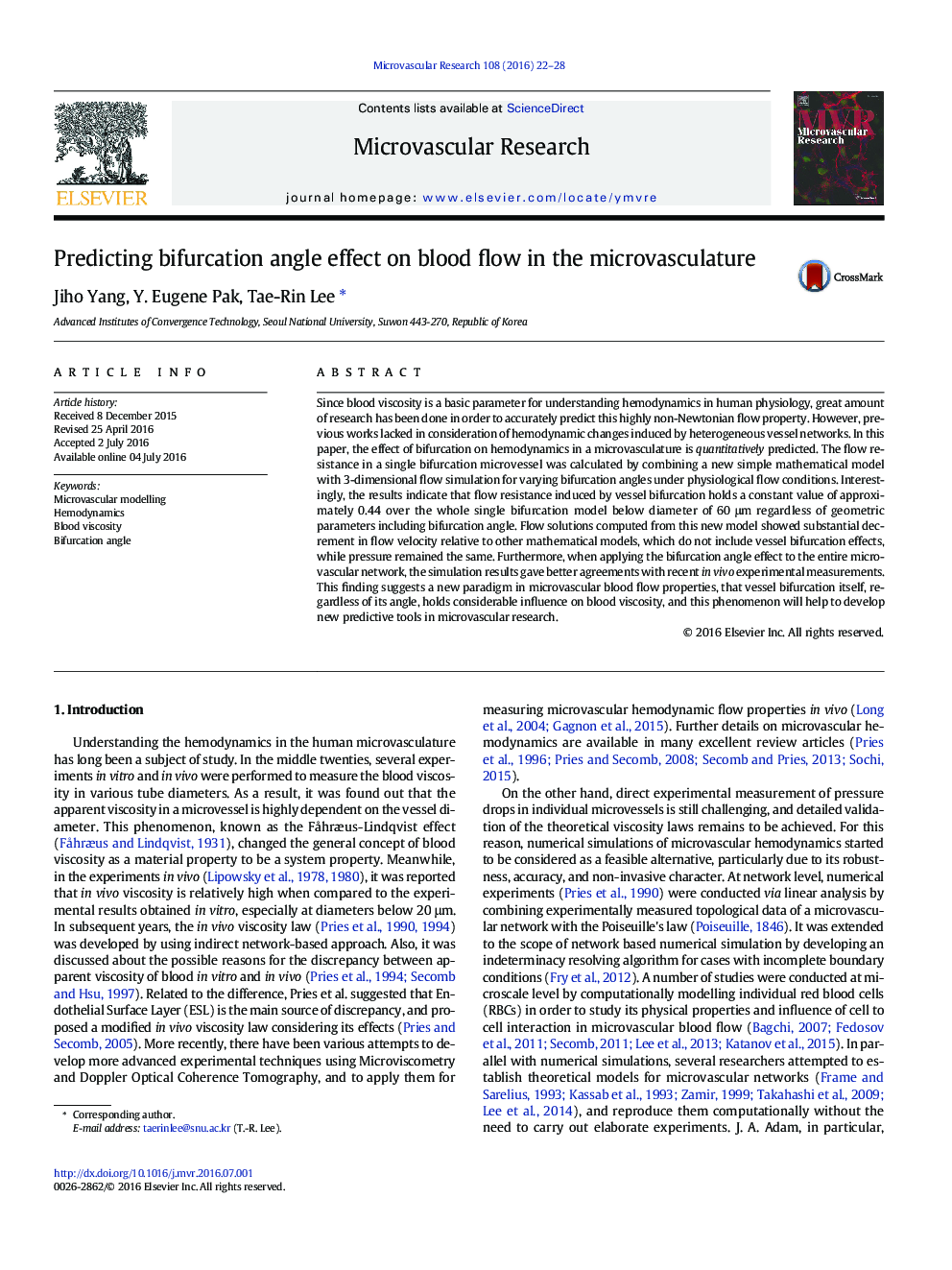| Article ID | Journal | Published Year | Pages | File Type |
|---|---|---|---|---|
| 1994652 | Microvascular Research | 2016 | 7 Pages |
•Flow resistance by bifurcation is calculated by using a simple mathematical model.•The flow resistance holds a constant value regardless of bifurcation angle.•The microvascular-level simulation gave better agreements with experiments.
Since blood viscosity is a basic parameter for understanding hemodynamics in human physiology, great amount of research has been done in order to accurately predict this highly non-Newtonian flow property. However, previous works lacked in consideration of hemodynamic changes induced by heterogeneous vessel networks. In this paper, the effect of bifurcation on hemodynamics in a microvasculature is quantitatively predicted. The flow resistance in a single bifurcation microvessel was calculated by combining a new simple mathematical model with 3-dimensional flow simulation for varying bifurcation angles under physiological flow conditions. Interestingly, the results indicate that flow resistance induced by vessel bifurcation holds a constant value of approximately 0.44 over the whole single bifurcation model below diameter of 60 μm regardless of geometric parameters including bifurcation angle. Flow solutions computed from this new model showed substantial decrement in flow velocity relative to other mathematical models, which do not include vessel bifurcation effects, while pressure remained the same. Furthermore, when applying the bifurcation angle effect to the entire microvascular network, the simulation results gave better agreements with recent in vivo experimental measurements. This finding suggests a new paradigm in microvascular blood flow properties, that vessel bifurcation itself, regardless of its angle, holds considerable influence on blood viscosity, and this phenomenon will help to develop new predictive tools in microvascular research.
